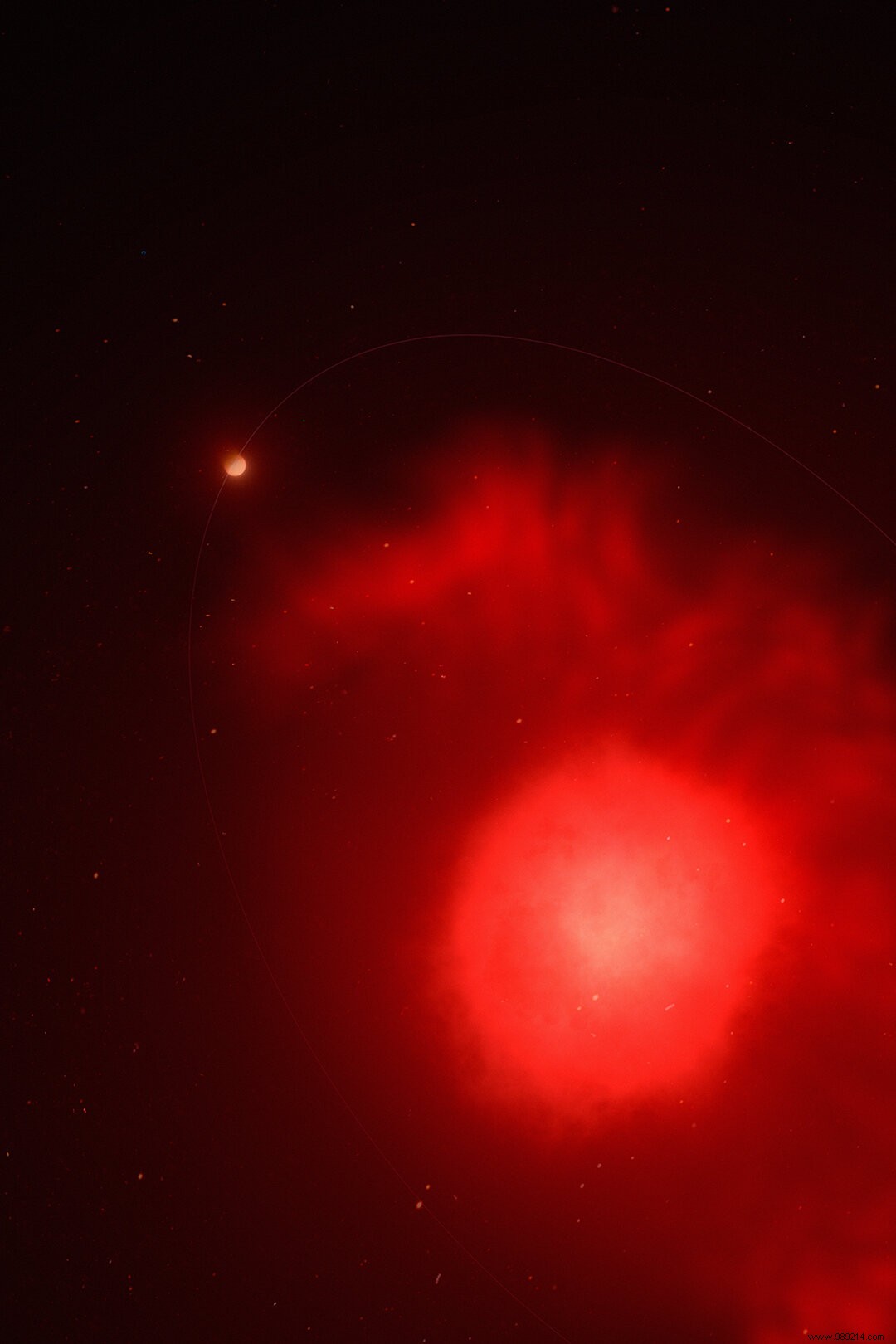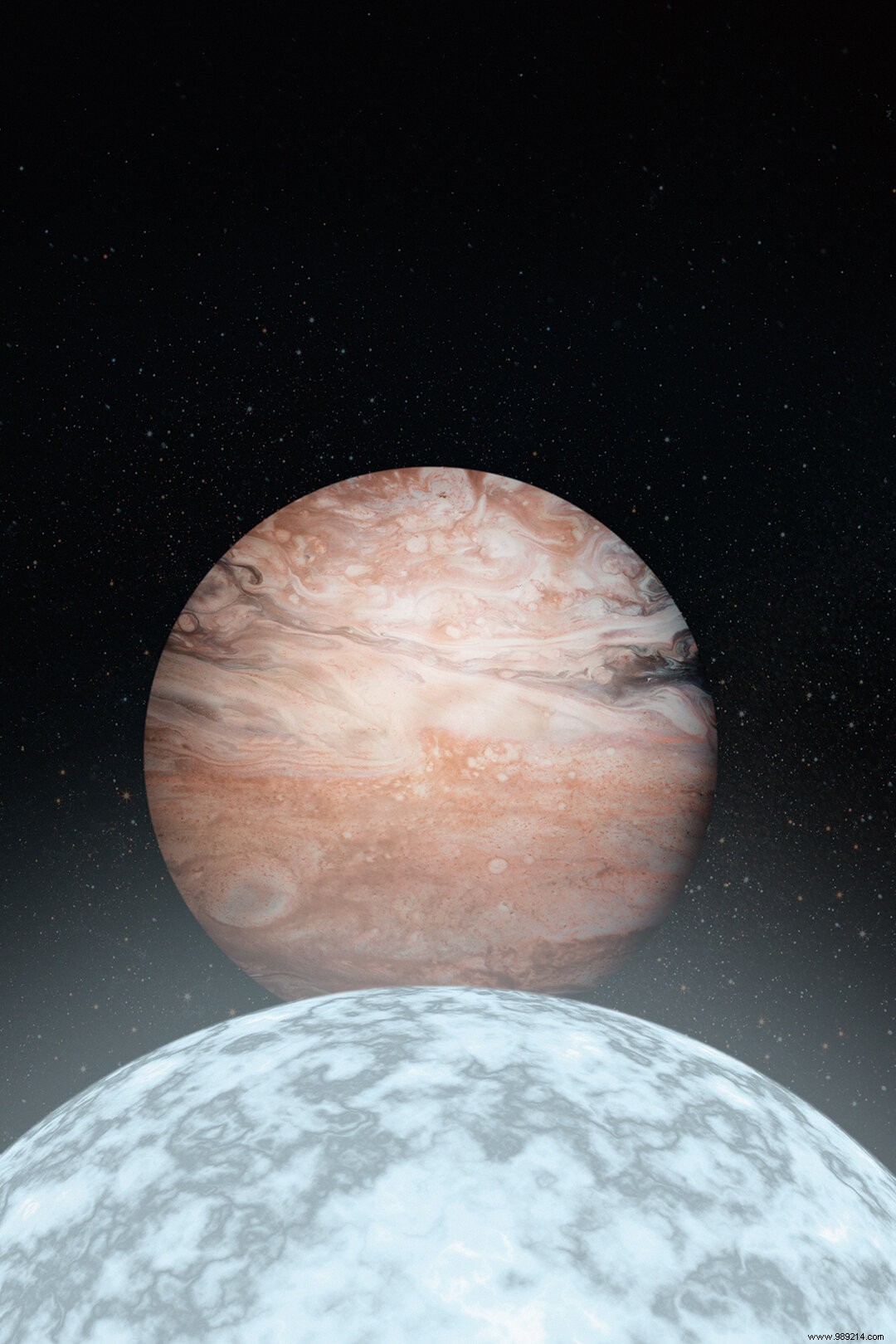A team of astronomers announces the discovery of an exoplanet that survived the death of its star. This Jupiter-like world now evolves around its corpse:a white dwarf. You will find all this beautiful world 6,500 light years from Earth, towards the center of the Milky Way.
In several billion years, our star will eventually run out of hydrogen, its main fuel. Its core will then begin to contract under its own gravity, while the outer layers of the star will expand. Gradually, the Sun will begin to swell before turning into a red giant. After about a billion years of expansion, our star will eventually collapse into a white dwarf, evolving for a few billion years before "the lights go out completely".
Since 97% of stars in the Milky Way are expected to take this route, it's important for astrophysicists to understand what could happen to their planetary systems. We know that this process should disrupt and potentially destroy the worlds closest to these stars, but is that always the case? A recent study published in Nature proves not.
Supported by the WM Keck Observatory in Hawaii, a team announces the discovery of a giant exoplanet which seems to have survived the death of its star there (about 60% the mass of the Sun). The planet, approximately 1.4 times more massive than Jupiter , is approximately 420 million kilometers of his star. In the Solar System, this represents the distance between the Sun and the dwarf planet Ceres, the largest object in the asteroid belt (and potentially a future host Earth). Astronomically, it's pretty close.

Researchers were able to isolate this exoplanet thanks to the micro lens technique which occurs when a star near Earth momentarily aligns with a star in the background. In this configuration, the gravity of the foreground star then acts as a lens and amplifies the light from the second star. If a planet orbits the nearest star, that star will in turn temporarily distort the magnified light as it orbits.

This planetary system could therefore present itself as a "window into the future" of the Solar System. Billions of years from now, as it expands, we do indeed know that the Sun's outer atmosphere will be large enough to absorb Mercury and Venus, but also possibly Earth. On the other hand, as evidenced by this new discovery, it is possible that Jupiter and Saturn could survive this process.
The research team plans to include these results in a statistical study to determine how many other white dwarfs still harbor planetary survivors. NASA's upcoming Nancy Grace Roman Telescope, which aims to directly image giant planets, will help further this investigation.